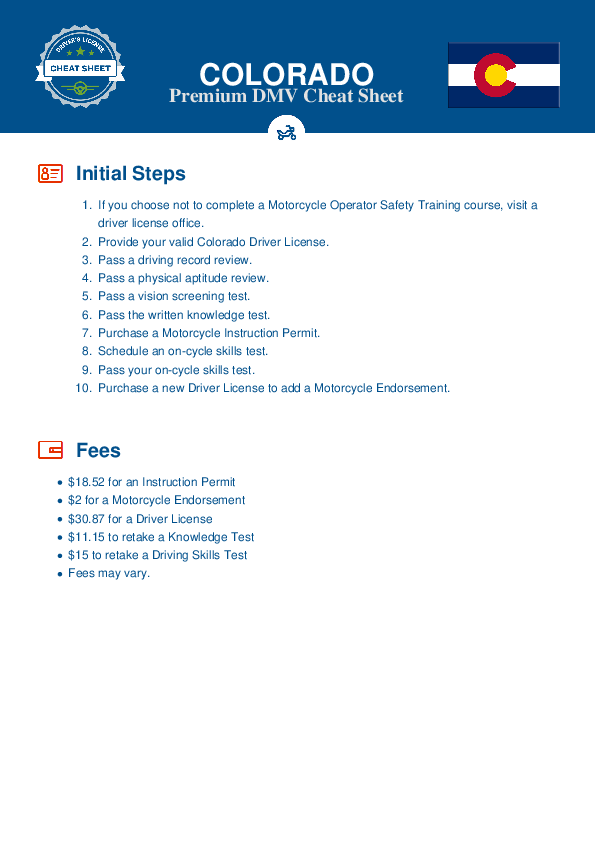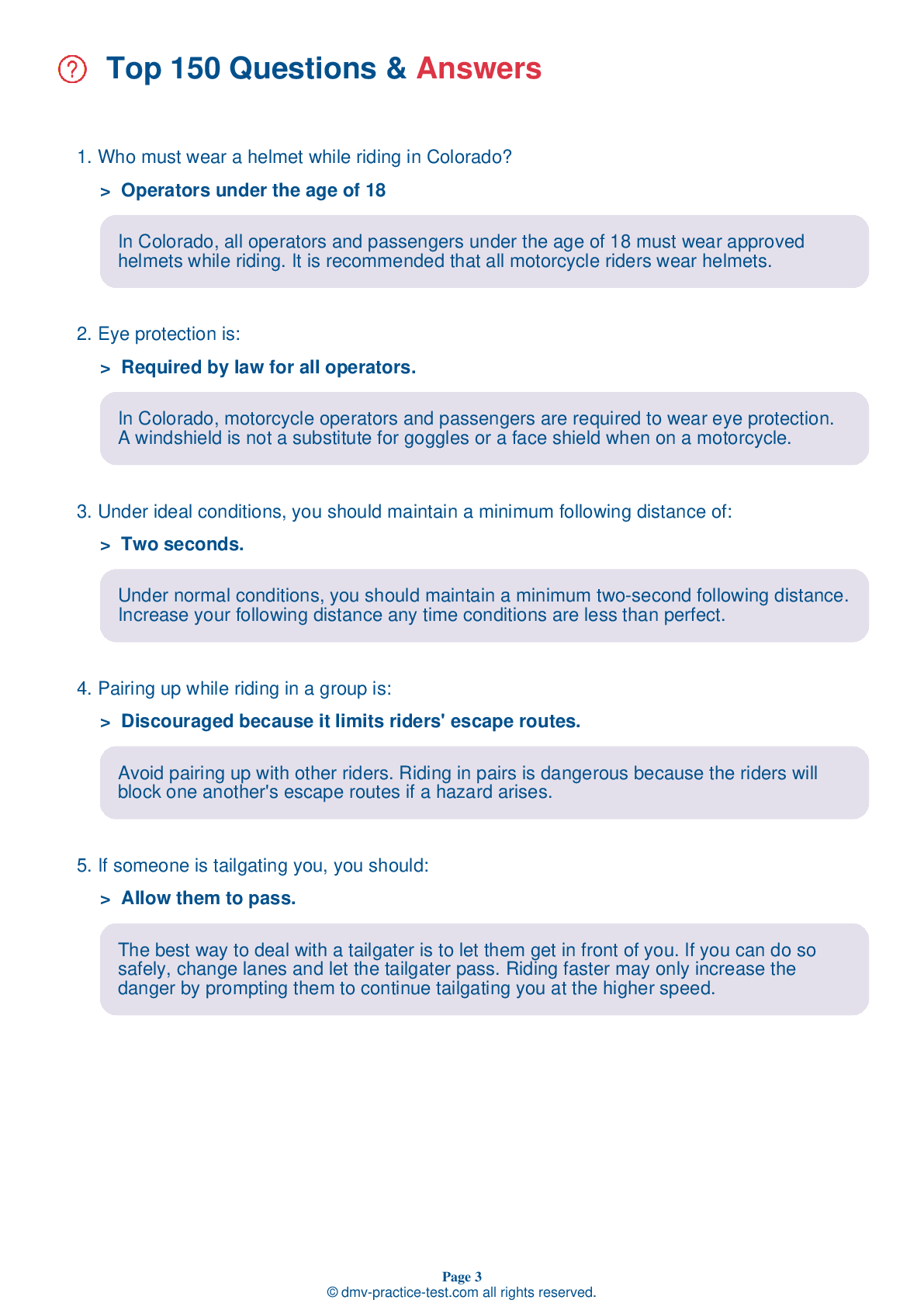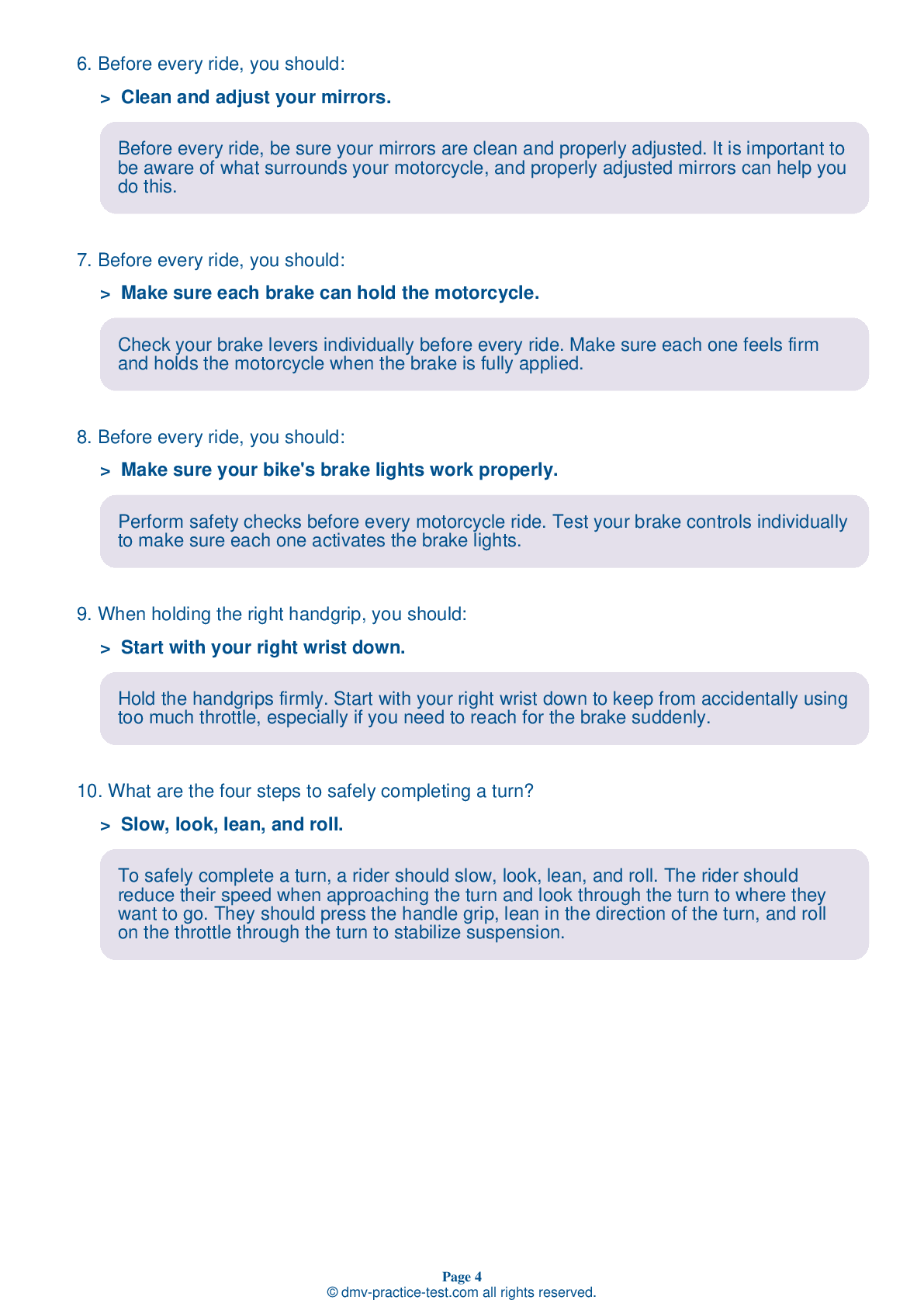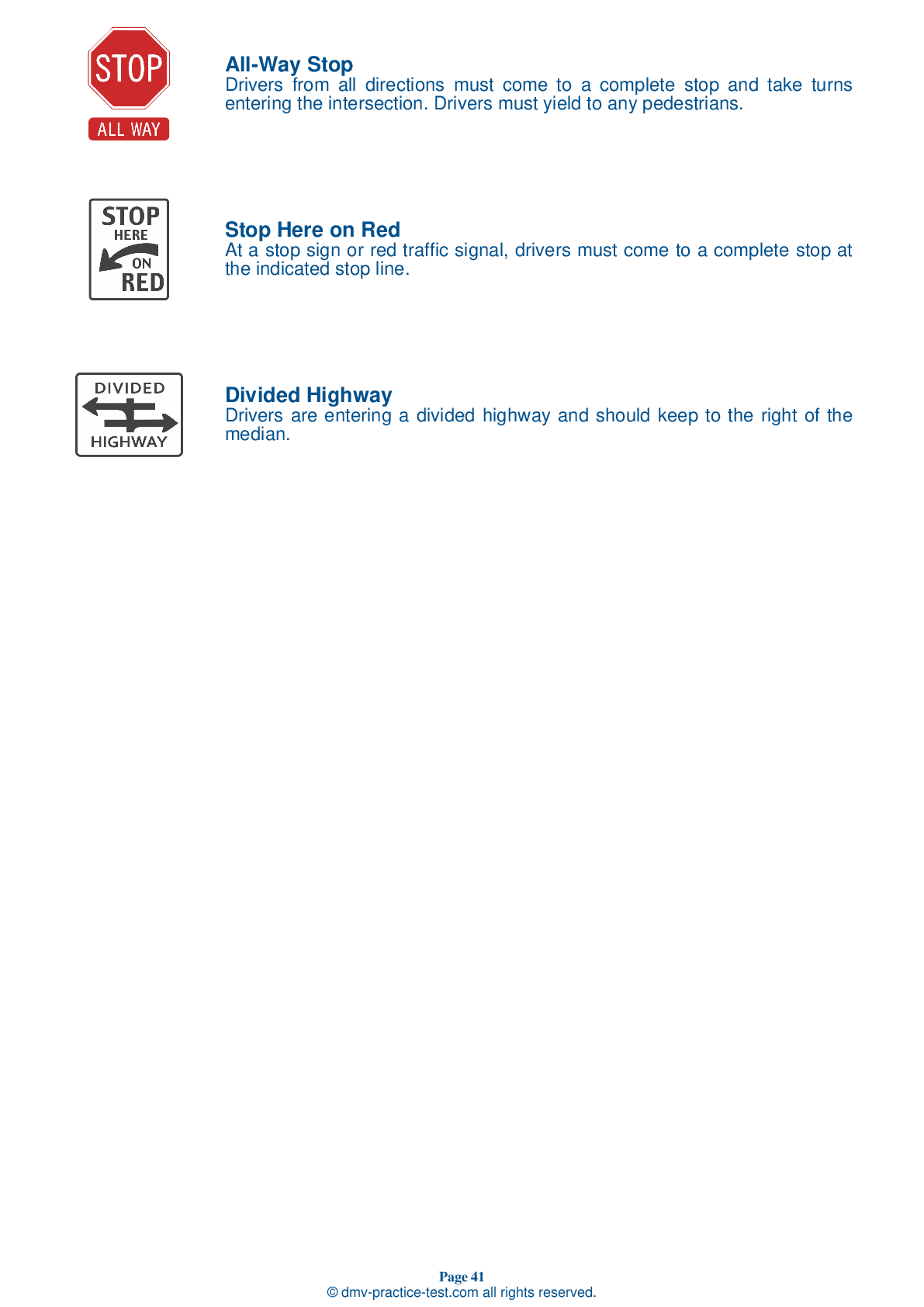Motorcycle Test | License CO 2025 | FREE Online Practice! #7
Take this FREE motorcycle test (license in CO 2025) to check your knowledge of the road rules. To improve your results, download a motorcycle handbook online, study theory, and practice for free on our website. Still worried about how to get a motorcycle license in Colorado in 2025? Check our website for more sample tests, train as much as possible, and boost your grades!
1 . Mirror checks should be done:
Frequent mirror checks should be part of your normal scanning routine. Additionally, make a special point of using your mirrors before changing lanes, when stopping at an intersection, and before slowing down.
2 . When entering a curve, it is often a good idea to:
Moving to the center portion of your lane before entering a curve allows you to spot oncoming traffic as early as possible. Starting in the center and staying there until you exit the curve also gives you space to adjust if the oncoming traffic crowds the centerline.
3 . Why should you use both the front and rear brakes every time you slow or stop?
Using both brakes even in normal stopping stops will help you develop the habit of always using both. Having this habit will serve you well in emergencies, where using both brakes may be critical.
4 . If you are being chased by a dog, you should:
Motorcycles often seem to attract dogs. If you are being chased by a dog, downshift and approach it slowly. Then, as you approach the dog, accelerate and leave it behind.
5 . To carry a passenger, you must have:
To carry a passenger safely, you must have a seat that will properly accommodate both you and the passenger without crowding and a set of foot pegs for the passenger. Motorcycle passengers should wear the same types of protective gear that operators wear.
6 . Riders who do not wear helmets while riding are ________ to die in a crash than riders who do wear helmets.
No matter the speed, riders who are not wearing helmets are three times more likely to die from head injuries than riders who are wearing helmets at the time of a crash.
See the exact questions that will be on the 2025 Colorado DMV exam.
99.2% of people who use the cheat sheet pass the FIRST TIME
Jeneen was tired of paying $5/gallon. She got herself a scooter that required the motorcycle license. She studyed the motorcycle test cheat sheet and passed her test the next day!
Christopher tells us how he knew nothing prior to obtaining the motorcycle study guide, and he only got one question wrong because he clicked on the wrong answer by mistake.



